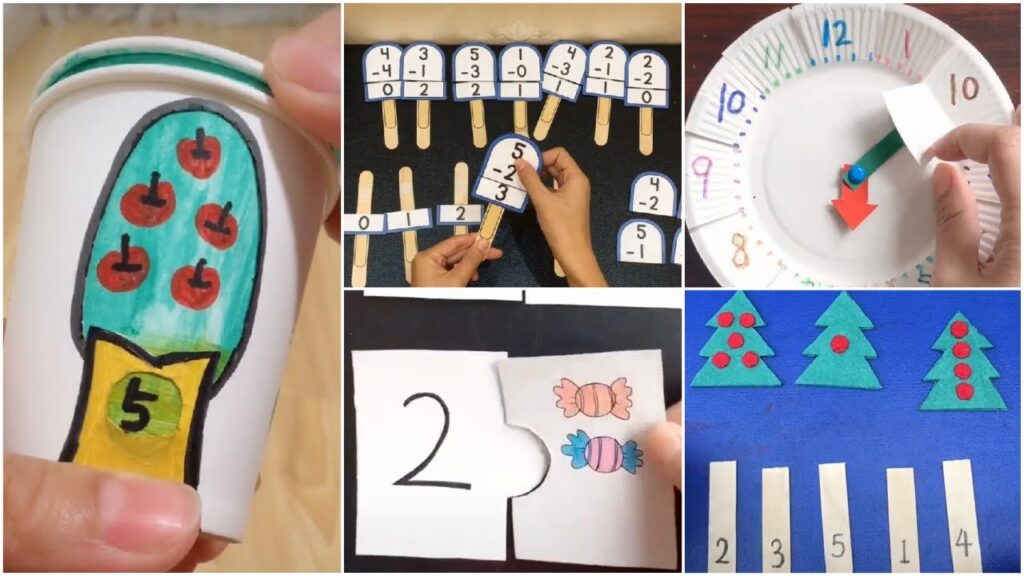Unleashing the Power of Engagement: 20 Captivating Educational Activities for Students
Engaging students has become a primary goal for educators in today’s ever-changing educational scene.
Gone are the days of passive learning, where students simply absorb information from textbooks and lectures.
The power of engagement lies in its ability to ignite curiosity, foster critical thinking, and enhance overall learning outcomes.
By incorporating interactive and captivating activities into the curriculum, educators can create dynamic learning environments that inspire and motivate students.
This post aims to explore the realm of engaging educational activities and provide a comprehensive guide for educators seeking to infuse their classrooms with interactive learning experiences.
From hands-on experiments and gamification to collaborative group projects and technology-enhanced learning, I will go into a wide range of strategies that cater to different learning styles and age groups.
By the end of this post, you will have a glance at 20 engaging activities that can transform your classroom into a place of excitement and learning.
Join us as I unlock the potential of engagement and discover how these innovative approaches can revolutionize the educational experience for students.
Let’s embark on this journey to unleash the power of engagement and create an environment where learning becomes a captivating adventure.
See Fun Activities for Students in the Classroom

Understanding the Power of Engagement
Engagement is critical in the learning process, acting as a stimulant for student enthusiasm, involvement, and information retention.
Students that actively participate in their education become active participants rather than passive recipients.
This active involvement enhances their ability to absorb and comprehend complex concepts, leading to a deeper understanding of the subject matter.
One of the primary benefits of engagement is its impact on student motivation.
Students gain a sense of ownership and personal investment in their education when they participate in the learning process.
This intrinsic motivation drives them to actively seek knowledge, explore new ideas, and take responsibility for their learning outcomes.
When faced with a challenge, engaged students are more likely to exert greater effort, tenacity, and resilience.
Several factors contribute to student engagement.
Firstly, relevance and personal connection to the material play a crucial role.
Students are more likely to engage with passion and curiosity when they can relate the topic to their own lives, interests, and experiences.
Secondly, incorporating interactive and hands-on activities stimulates multiple senses and enhances cognitive engagement.
By encouraging students to actively participate, experiment, and discover, educators create a dynamic learning environment that captivates their attention.
Furthermore, the learning environment itself has a significant impact on engagement.
A classroom that fosters positive relationships, collaboration, and a sense of belonging cultivates a supportive community of learners.
Students are more likely to participate actively in classroom activities when they feel appreciated, respected, and connected to their peers and professors.
In conclusion, understanding the power of engagement is crucial for educators seeking to create impactful and enriching learning experiences.
By tapping into the intrinsic motivation of students, incorporating relevant and interactive activities, and cultivating a positive learning environment, educators can unlock the full potential of engagement and empower students to become active participants in their educational journey.
See Motivational Activities for Students
Exploring Engaging Educational Activities
Engaging in educational activities provides students with interactive and immersive learning experiences that go beyond traditional classroom methods. These exercises not only keep kids’ attention, but also encourage critical thinking, creativity, and teamwork.
Let’s dive into various categories of engaging educational activities that educators can incorporate into their teaching practices:
Hands-On Experiments and Demonstrations
The value of hands-on learning experiences: Explore how hands-on experiments and demonstrations can help students comprehend and retain scientific topics.
- Engaging science experiments for different age groups: Discover a range of age-appropriate science experiments that can captivate students’ interest and promote scientific inquiry.
- Creative demonstrations that foster curiosity and critical thinking: Explore innovative demonstrations that spark curiosity and encourage students to think critically about the underlying principles.
B. Gamification and Educational Games
- The effectiveness of gamification in education: Learn about the benefits of gamifying the learning process and how it can increase student engagement and motivation.
- Popular educational games and platforms: Discover a variety of educational games and platforms that combine learning objectives with interactive gameplay to make learning enjoyable and effective.
- Designing interactive quizzes and challenges: Explore strategies for creating interactive quizzes, challenges, and competitions that promote active participation and reinforce learning outcomes.
C. Collaborative Group Projects
Promoting teamwork and communication skills: Understand how collaborative group projects can develop essential life skills such as teamwork, communication, and problem-solving.
- Examples of collaborative projects across subjects: Explore examples of collaborative projects in different subjects, including science, literature, and social studies, that encourage students to work together and share ideas.
- Effective strategies for managing group activities: Learn practical tips for managing group activities, assigning roles, and fostering a positive and inclusive group dynamic.
D. Outdoor and Experiential Learning
- The benefits of outdoor education: Discover the advantages of outdoor and experiential learning, including improved focus, connection to nature, and enhanced creativity.
- Field trips and educational outings that enhance engagement: Explore various field trip ideas and educational outings that provide students with hands-on experiences outside the classroom.
- Incorporating nature and environment-based activities: Learn how to integrate nature and environmental activities into the curriculum, fostering a sense of environmental stewardship and appreciation.
E. Technology-Enhanced Learning
- Utilizing educational apps and digital tools: Explore a range of educational apps and digital tools that can engage students and enhance learning across different subjects.
- Virtual reality and augmented reality in education: Discover how virtual reality and augmented reality may be used to create immersive learning experiences that bring abstract concepts to life.
- Blended learning approaches and online resources: Learn how to effectively integrate online resources and blended learning approaches to create a flexible and interactive learning environment.
F. Creative Arts and Expression
- Encouraging creativity through art, music, and drama: Explore how integrating art, music, and theatre into the curriculum can foster creativity, self-expression, and interdisciplinary learning.
- Engaging students through storytelling and role-playing: Discover the power of storytelling and role-playing in capturing students’ imagination and fostering empathy and understanding.
- Exploring creative writing and multimedia projects: Learn about engaging writing activities and multimedia projects that allow students to express their ideas and showcase their learning in creative ways.
G. Physical Activities and Movement-Based Learning
- The connection between physical activity and learning: explore the relationship between physical activity and cognitive engagement, as well as how physical activities can improve memory, attention, and general learning.
- Incorporating movement in the classroom and curriculum: Discover practical strategies for incorporating movement breaks, brain breaks, and kinesthetic learning activities into the daily classroom routine.
- Active learning games and exercises: Learn about active learning games and exercises that combine physical movement with educational content, promoting both physical and mental engagement.
H. Real-World Problem-Solving
- Connecting learning to real-life situations: Understand the importance of connecting classroom learning to real-world contexts, fostering student engagement and application of knowledge.
- Engaging students in critical thinking and decision-making: Explore problem-solving activities that force students to think critically, make informed judgments, and use what they’ve learned to solve real-world problems.
- Case studies and project-based learning: Learn how to use case studies and project-based learning to engage students in in-depth research and hands-on problem-solving.
I. Interactive Technology Tools
- Interactive whiteboards and interactive displays: Learn how interactive whiteboards and displays can enhance student engagement, interactivity, and collaboration during lessons.
- Educational apps for interactive learning experiences: Explore a variety of educational apps that offer interactive features, gamification elements, and personalized learning experiences.
- Implementing interactive technology in the classroom: Discover practical tips for effectively integrating interactive technology tools into the classroom environment, considering factors such as accessibility, pedagogical goals, and student needs.
J. Simulations and Role-Playing
- Using simulations to enhance understanding and engagement: Understand how simulations can provide students with realistic scenarios and immersive experiences that deepen their understanding and engagement.
- Role-playing activities to develop empathy and perspective-taking: Investigate role-playing exercises that allow students to put themselves in the shoes of various characters, promoting empathy, perspective-taking, and social-emotional learning.
- Virtual simulations and their impact on learning: Learn about the possibilities of virtual simulations in subjects such as physics, history, and entrepreneurship, as well as how they can improve student engagement and experiential learning.
Educators may create dynamic and stimulating learning environments that inspire and empower students to become active participants in their own education by adding these engaging instructional activities into their teaching techniques.
Assessing the Impact of Engagement
Measuring the impact of engagement in educational settings is essential for educators to gauge the effectiveness of their teaching methods and interventions. By evaluating student engagement, educators can identify areas of improvement, make informed instructional decisions, and optimize the learning experience. Here are key aspects to consider when assessing the impact of engagement:
- Measuring student engagement and its Correlation with academic performance:
- Quantitative assessments: Utilize surveys, questionnaires, or rating scales to measure students’ self-reported levels of engagement.
- Observational assessments: Observe students’ behaviours, participation, and interactions during classroom activities to assess their engagement levels.
- Academic performance: Examine students’ academic achievements, grades, and progress to identify any correlation with their level of engagement.
- Evaluating the effectiveness of engaging activities:
- Pre-and post-assessments: Administer assessments before and after engaging in activities to evaluate knowledge gain and skill development.
- Feedback and reflection: Encourage students to provide feedback on the activities, reflecting on their engagement, perceived learning outcomes, and areas of improvement.
- Classroom observations: Observe how students respond to engaging activities, their level of participation, and their enthusiasm to gauge the effectiveness of the activities.
- Identifying signs of student disengagement and strategies for re-engagement:
- Behavioural cues: Recognize disengagement symptoms such as inattention, lack of participation, or retreat from activities.
- Individualized approaches: Implement strategies to re-engage disengaged students, such as providing additional support, adapting activities to their interests, or fostering personalized learning experiences.
- Student feedback and reflection: Encourage students to share their perspectives on the factors that contribute to their disengagement and collaborate on finding solutions.
- Continuous improvement and reflection:
- Educator self-reflection: Engage in self-reflection to evaluate the effectiveness of instructional methods, activity design, and overall classroom environment in promoting engagement.
- Collaboration and professional development: Collaborate with colleagues, attend professional development workshops, or participate in communities of practice to exchange ideas and strategies for enhancing engagement.
By assessing the impact of engagement, educators can make data-informed decisions to refine their teaching practices, design more effective activities, and create an optimal learning environment that nurtures student engagement, motivation, and success.
See Google Classroom Games for Interactive Learning
Conclusion
Engaging in educational activities has the power to transform the learning experience for students.
By incorporating interactive and immersive approaches, educators can foster curiosity, critical thinking, and active participation in the classroom.
Throughout this post, I have explored various categories of engaging activities, including hands-on experiments, gamification, collaborative projects, outdoor learning, technology-enhanced methods, creative arts, physical activities, problem-solving, interactive technology tools, simulations, and role-playing.
Engagement plays a vital role in student motivation and learning outcomes.
When students are actively involved in their education, they create a sense of ownership and engagement in it, which leads to increased effort, tenacity, and deeper knowledge.
By understanding the factors that contribute to engagement and implementing diverse strategies, educators can create dynamic learning environments that cater to different learning styles and interests.
Assessing the impact of engagement is crucial for educators to evaluate the effectiveness of their instructional methods and interventions.
Through quantitative and qualitative measures, educators can measure student engagement levels, evaluate the effectiveness of engaging activities, identify signs of disengagement, and implement strategies for re-engagement.
Continuous reflection and collaboration with peers further contribute to the refinement and improvement of teaching practices.
In conclusion, unleashing the power of engagement in education is a transformative journey.
By embracing a wide range of engaging activities and assessing their impact, educators can create vibrant classrooms where students are actively involved, motivated, and empowered to take ownership of their learning.
Let us strive to inspire a love for learning and foster a generation of curious, engaged, and successful students.






